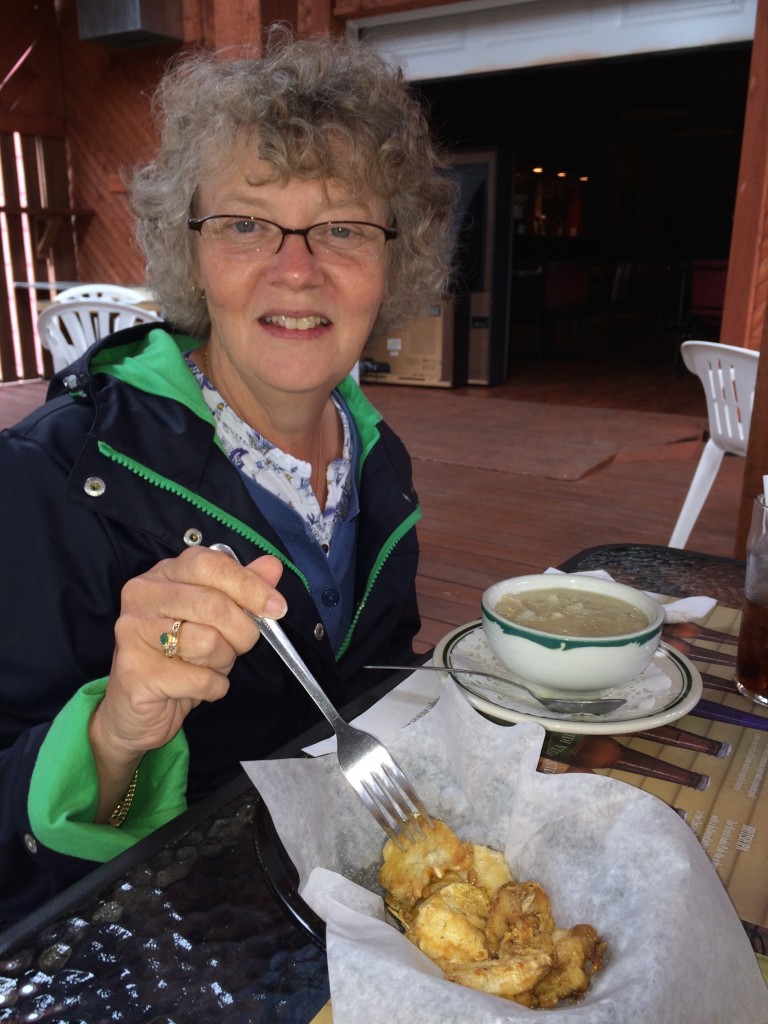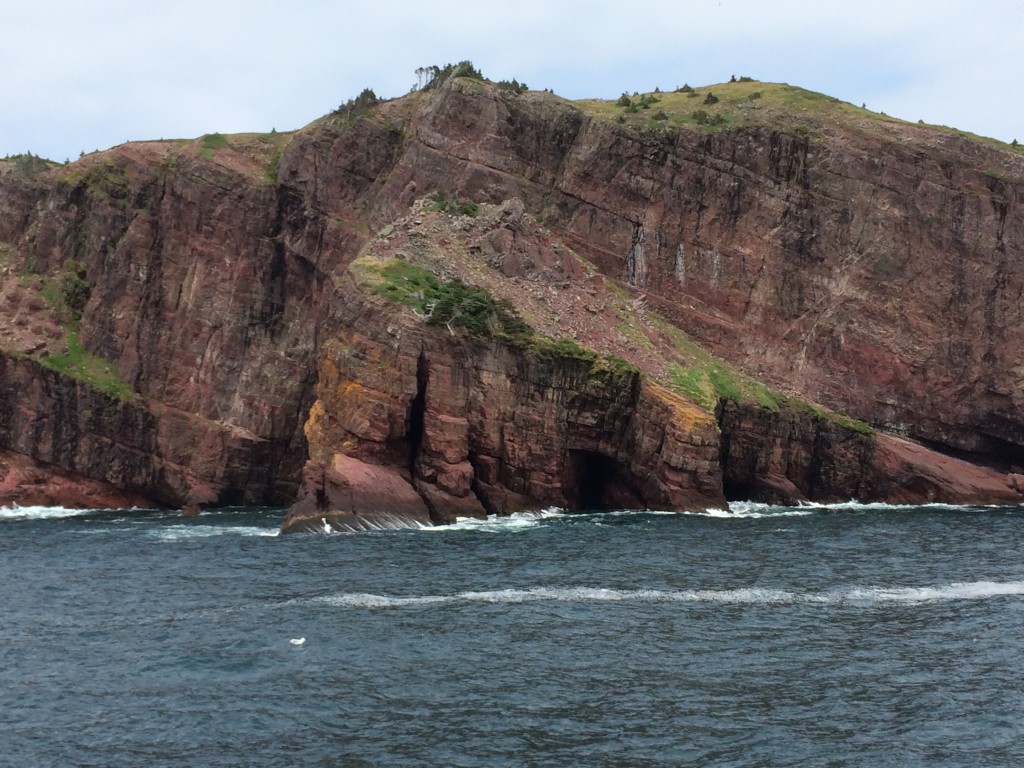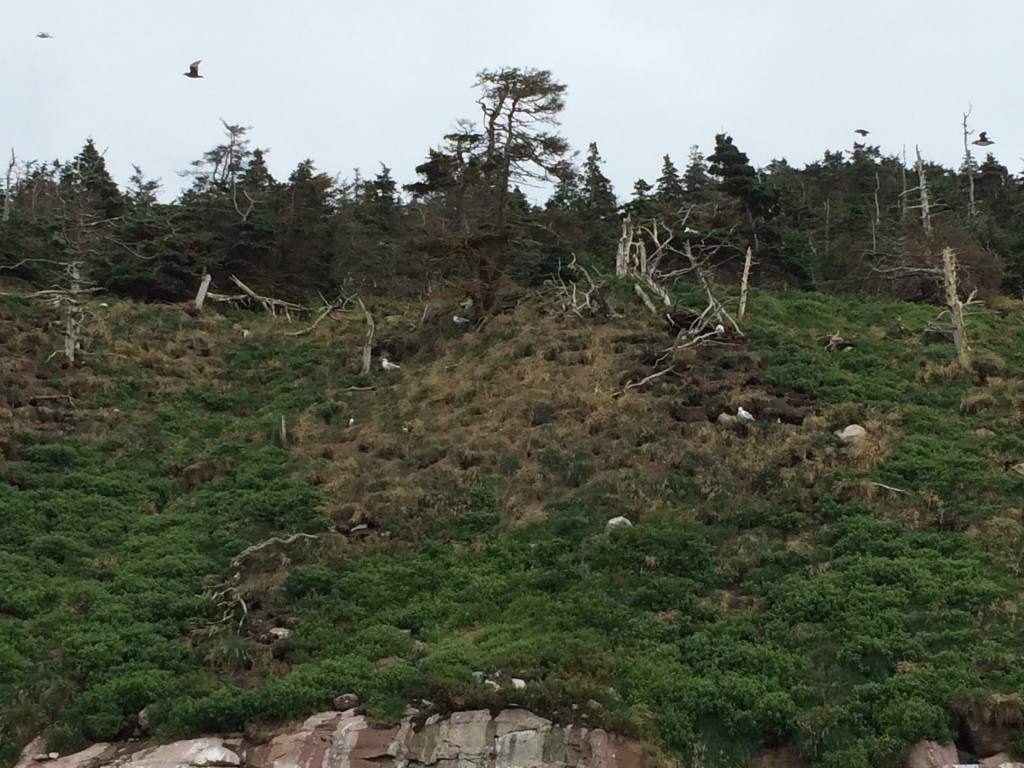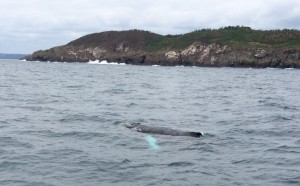Saturday we drove down to Bay Bulls to catch a tour boat to see puffins, other sea birds and, if lucky, whales. Bay Bulls is the little town where I stayed for 6 weeks or so back in 1972. For some reason there was no sign of the old wooden house where we stayed, perhaps because it had no electricity, running water or central heating. It was hard to even tell where the old house had been with a nicely paved road extending far beyond where the old muffler-busting gravel road petered out in the old days, just beyond the old house. All in all the town is entirely different than the impoverished fishing village I remembered, which is a good thing.
We have a fair number of pictures but we were not sure how many puffins and sea gulls you wanted to see so we present only a few of them here.
The trip out was nice once I convinced myself I wouldn’t be sea-sick. Below are several pictures of the outer-bay and around to the open-ocean shore. Later today we will head out for a 4+ mile walk around from Bay Bulls to Witless Bay (the next bay to the north) so you’ll get more picks of Bay Bulls and the sea around there.
Then the boat headed out to the larger of several islands that are designated by the Canadian government as a bird sanctuary (“Witless Bay Ecological Reserve”).
So this is a puffin. Not sure what all the excitement is about, except maybe they make for cute pictures, toys and stuffed animals. They mate for life but live apart most of the year and only have 18 seconds of sex per year and that’s underwater. The tour guide says they are a member of a class of birds called PPF – piss poor flyers but he’s a Newfie and admitted that some of this information might not be scientifically reliable. Poor swimmers the puffin might be but using their aerodynamically-challenged wings they can dive down to 100 feet to catch a sadly small fish.
Government scientists at work in a bird blind…
Why does this picture remind me of Monty Python?
More on this bird sanctuary with a decent puffin picture:
…http://www.env.gov.nl.ca/env/parks/wer/r_wbe/
You-tube video – this is likely taken from the same tour boat:
…https://www.youtube.com/watch?v=uAN-oyqY0QE
The tour guides were very happy to find a couple whales so late in the season since by mid-August the whales usually come to the realization that the water is much warmer in the Caribbean. Of course the tour company did not emphasize the scarcity of whales prior to our signing up but there were still a few left and we found two of them. They didn’t dance around much for us so not a lot of pictures but this was pretty well the best of the lot.
Keeping in the spirit of the sea we found a small restaurant with fish chowder and cod tongues. (Greg, you wanted more food pics so this is for you). Janet felt sort of bad that these cod could no longer talk with each other but the tongues were pretty tasty…

















































 Our hotel would be in the middle-top of the above map. Below, it is the greenish building in the center of the picture.
Our hotel would be in the middle-top of the above map. Below, it is the greenish building in the center of the picture.





